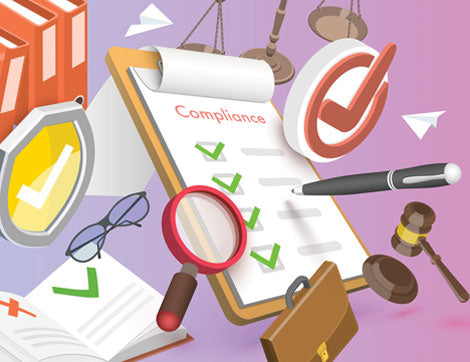
Compliance is not one person's responsibility in a training organisation
SUKH SANDHUCompliance is not one person's responsibility in a training organisation
In a training organisation, compliance is not just one person's job. Compliance is the responsibility of everyone in the organisation, from the CEO down to the entry-level staff member. Sure, there may be someone whose job it is to oversee compliance related matters, but that doesn't mean that they are the only one responsible for ensuring that the organisation complies with all applicable laws and regulations. Everyone has a role to play in ensuring compliance. Everyone in the organisation must ensure that the organisation complies with all relevant laws and regulations.
There are many compliance risks associated with running a training organisation. These include risks related to health and safety, financial reporting, data protection and equal opportunity laws.
Training organisations need to have systems and processes in place to manage these risks. But more importantly, they need to ensure that all employees are aware of their responsibilities and are held accountable for complying with the organisation's policies and procedures. RTO Management need to provide adequate training to staff on their obligations under the law. The compliance function should be overseen by a board or senior management team, and there should be clear lines of communication between the compliance team and other parts of the organisation. The compliance team should have the authority to carry out investigations and take disciplinary action where necessary.
Compliance is a complex issue, and organisations need to make sure that they have adequate resources in place to deal with it. Compliance officers can play an important role in helping to ensure that organisations meet their obligations, but they cannot do everything themselves. Everyone in the organisation needs to be aware of their responsibilities and play their part in ensuring compliance.
There are a number of compliance risks associated with training organisations, and it is important that these are identified and managed effectively. Some of the most common risks include:
Not complying with mandatory training requirements – This can lead to serious consequences such as fines or even closure of the organisation.
Delivering training that is not up to standard – This can result in complaints from clients or customers, and can damage the reputation of the organisation.
Failing to keep accurate records of training – This can make it difficult to prove that training has been delivered, and can lead to problems with regulator audits.
There are a number of steps that training organisations can take to ensure compliance.
Firstly, they should establish clear policies and procedures relating to compliance. These should be regularly reviewed and updated as necessary.
Secondly, training organisations should appoint a designated compliance officer. This person should be responsible for monitoring compliance and for investigating any breaches.
Thirdly, training organisations should ensure that all staff are aware of their compliance obligations. This can be done through regular training and communication.
Finally, training organisations should have systems in place to deal with complaints or concerns about compliance. These should be dealt with promptly and appropriately. The following are some key elements of an effective compliance management system:
Policies and procedures – There should be clear policies and procedures in place that cover all aspects of compliance. These should be communicated to all employees, and regularly reviewed and updated.
Training – Employees should receive regular training on compliance related topics. This will help them to understand their responsibilities, and ensure that they are up-to-date with the latest requirements.
Monitoring – Compliance should be monitored on an ongoing basis, and any problems should be promptly addressed.
Reporting – There should be a system in place for reporting compliance issues, so that they can be quickly rectified.
Hacing a compliance strategy in place - Organisations need to have a compliance strategy in place to ensure that all employees receive the training they need to stay compliant with company policy and legal requirements. This strategy should be designed to meet the specific needs of the organisation and its employees. It is important to note that compliance is not one person's job in a training organisation; rather, it should be seen as an ongoing process that involves everyone in the organisation.
When designing a compliance strategy, organisations should consider the following factors:
- The type of training required (e.g. online, classroom-based, on-the-job)
- The frequency of training (e.g. annual, biennial, quarterly)
- The delivery method (e.g. e-learning, instructor-led training)
- The target audience (e.g. all employees, certain departments or job roles)
- The budget available for compliance training
Organisations should also put in place a system for monitoring and evaluating the effectiveness of their compliance strategy. This will help to ensure that employees are receiving the training they need and that the organisation is meeting its compliance obligations.
Compliance is an important part of running a successful training organisation. By taking steps to ensure that the organisation complies with all relevant laws and regulations, organisations can minimise their exposure to risk and protect their reputation.
RECENT POSTS





